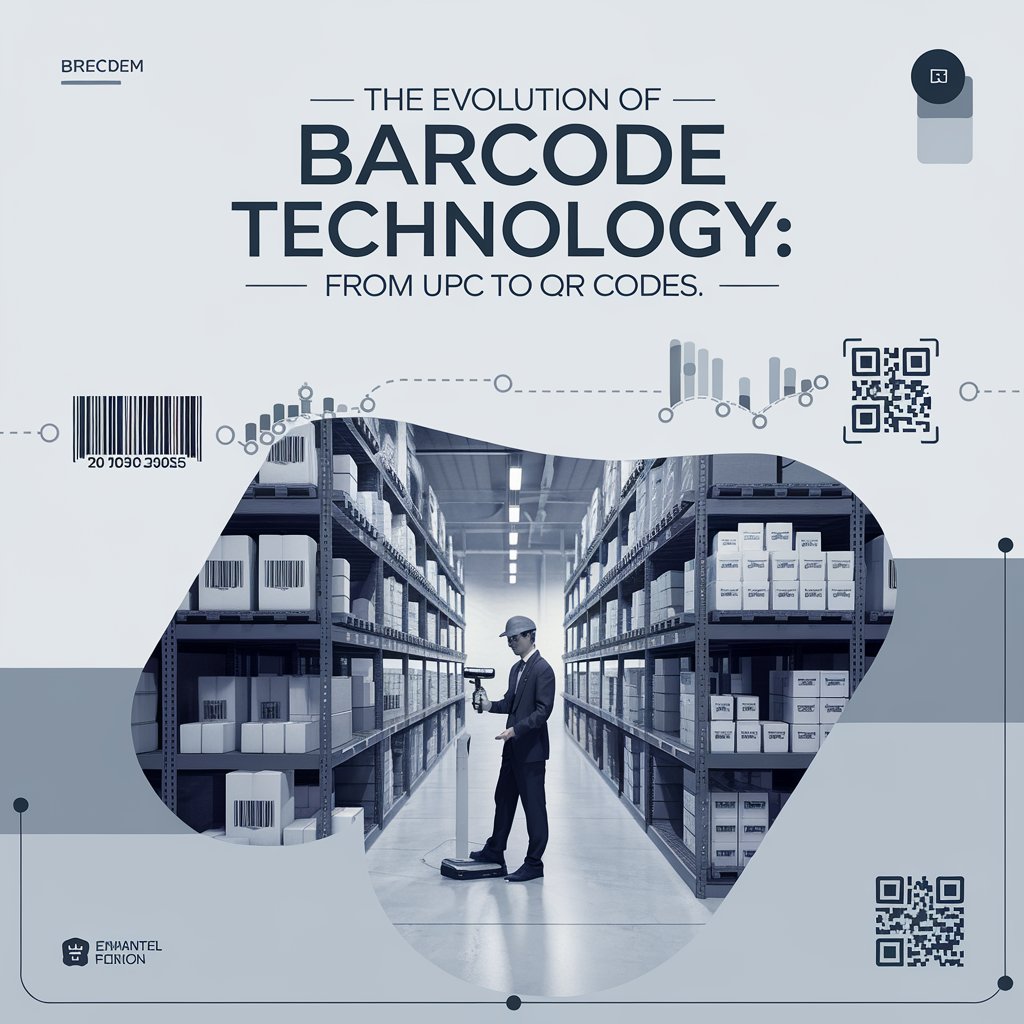The Evolution of Barcode Technology: From UPC to QR Codes

The Birth of the Barcode Technology: The UPC
The story of modern barcode technology begins in 1974 with the introduction of the Universal Product Code (UPC). Created to streamline the checkout process in grocery stores, the UPC quickly became the standard for retail product identification.
Key Features of Barcode Technology UPC:
- Consists of 12 numerical digits
- Encodes information about the product and manufacturer
- Readable by specialized optical scanners
The UPC’s adoption marked a significant shift in retail operations, enabling faster checkout times, improved inventory accuracy, and better sales tracking.

The Rise of 1D Barcodes
Following the success of the UPC, various other one-dimensional (1D) barcode symbologies were developed to meet the needs of different industries:
- Code 39: Widely used in logistics and manufacturing
- Codabar: Popular in libraries and blood banks
- Interleaved 2 of 5: Common in shipping and warehousing
- EAN: The European counterpart to UPC, now used globally
These 1D barcodes expanded the use of barcode technology beyond retail, revolutionizing inventory management across multiple sectors.
The Advent of 2D Barcodes
As the need for encoding more information grew, two-dimensional (2D) barcodes emerged in the late 1980s and early 1990s:
Data Matrix
- Can store up to 2,335 alphanumeric characters
- Commonly used in electronics manufacturing
PDF417
- Can encode up to 1,800 printable ASCII characters
- Often used on identification cards and shipping labels
QR Code
- Invented in 1994 by Denso Wave
- Can store up to 7,089 characters
- Quickly readable by smartphones, leading to widespread adoption
2D barcodes significantly expanded the amount of data that could be encoded, opening up new applications for barcode technology.

The Impact of Barcode Evolution on Various Industries
Retail
- Faster checkout processes
- Improved inventory management
- Enhanced customer experiences through product information access
Healthcare
- Accurate patient identification
- Medication tracking and error reduction
- Equipment and supply management
Manufacturing
- Improved quality control
- Enhanced traceability of components
- Streamlined assembly processes
Logistics and Supply Chain
- Real-time tracking of shipments
- Improved warehouse management
- Enhanced transparency and traceability
Marketing and Advertising
- Interactive marketing campaigns using QR codes
- Direct linking to websites and promotional content
- Enhanced product information delivery to consumers

The Future of Barcode Technology
As we look to the future, barcode technology continues to evolve:
- Near Field Communication (NFC): While not strictly a barcode, NFC tags are often seen as the next evolution in product identification and interaction.
- Augmented Reality (AR) Codes: Combining barcode technology with AR for enhanced user experiences.
- Color Barcodes: Increasing data capacity through the use of color in barcode design.
- Invisible Barcodes: Using ultraviolet or infrared inks for covert tracking and authentication.
- Edible Barcodes: For tracking and authenticating food products.

Conclusion
The evolution of barcode technology from the simple UPC to complex QR codes and beyond represents a remarkable journey of innovation. This technology has fundamentally changed how businesses operate, enhancing efficiency, accuracy, and customer experiences across numerous industries.
As we continue to push the boundaries of what’s possible with barcodes, one thing is clear: the impact of this technology will only grow, shaping the future of commerce, healthcare, manufacturing, and more in ways we’re just beginning to imagine.
How Linbis Can Help
As barcode technology continues to evolve, businesses need partners who understand both the history and the cutting edge of this field. Linbis, with its expertise in logistics software development, is well-positioned to help businesses leverage the latest in barcode technology.
Whether you’re looking to implement a basic barcode system or integrate advanced 2D barcodes into your operations, Linbis offers both out-of-the-box solutions and custom development services. Our team understands the nuances of different barcode technologies and can help you choose and implement the right solution for your specific needs.
From retail to healthcare, manufacturing to logistics, Linbis can develop tailored software solutions that incorporate the most appropriate barcode technology for your industry. By partnering with Linbis, you ensure that your business stays at the forefront of barcode innovation, maximizing efficiency and gaining a competitive edge in your market.
As barcode technology continues to advance, count on Linbis to help you navigate these changes and implement solutions that drive your business forward. Remember, while we provide the technological foundation, the true power of barcode technology comes from its strategic implementation within your unique business processes.
